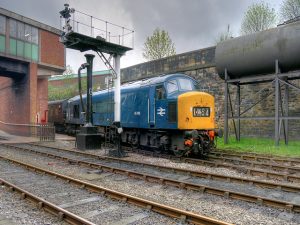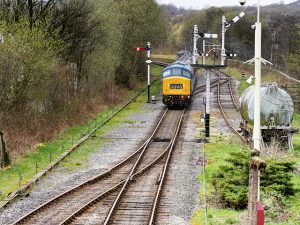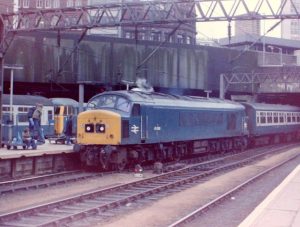Introduction
In the annals of railway history, certain locomotives stand out as iconic symbols of power, reliability, and engineering excellence. One such locomotive that left an indelible mark on the railway industry is the Class 45. These diesel-electric locomotives, built in the 1960s, became synonymous with British Railways during a period of significant technological advancements and social change. In this article, we will delve into the fascinating world of the Class 45 locomotives, exploring their history, design, impact, and enduring legacy.
A Brief Historical Overview
The Class 45 locomotives were part of the British Rail Class 44, 45, and 46 series, collectively known as the Peak Class. Designed and manufactured by the renowned British engineering company, British Railways Engineering Limited (BREL), these locomotives were primarily used for hauling both passenger and freight trains across the vast British railway network.
Design and Engineering
The Class 45 locomotives were characterized by their distinctive appearance, featuring a sleek and robust exterior that exuded power and efficiency. Powered by Sulzer 12LDA28C diesel engines, these locomotives were capable of producing impressive horsepower, making them ideal for handling heavy loads and traversing challenging terrains. The use of advanced diesel-electric technology ensured optimal fuel efficiency and reduced environmental impact, marking a significant leap forward in locomotive design during that era.
Operational Excellence
One of the defining features of the Class 45 locomotives was their operational versatility. They were deployed in various roles, including express passenger services and freight transport. Their ability to maintain high speeds while delivering a reliable and smooth performance made them a favorite among railway operators and crew members alike. The Class 45 locomotives played a vital role in connecting cities, towns, and communities, fostering economic growth and facilitating travel across the United Kingdom.
Cultural Impact
Beyond their technical prowess, the Class 45 locomotives became ingrained in the cultural fabric of Britain. They inspired awe and admiration among railway enthusiasts, artists, and writers, finding their way into literature, music, and art. The distinct rumble of their engines and the sight of these powerful machines traversing picturesque landscapes became an enduring image of British railways during the 1960s and 1970s.
Legacy and Preservation
Despite the march of time and the evolution of railway technology, the Class 45 locomotives have not been forgotten. Several enthusiasts and heritage railway organizations have painstakingly preserved these iconic machines, ensuring that future generations can experience the magic of these historic locomotives first hand. Preservation societies and museums dedicated to railway heritage often showcase a well-maintained Class 45 locomotive, allowing visitors to step back in time and appreciate the engineering marvels of the past.
Conclusion
The Class 45 locomotives, with their powerful engines, elegant design, and operational excellence, represent a golden era in railway history. These iconic machines not only served as reliable workhorses of the British Railways but also captured the imagination of generations, leaving an indelible mark on the cultural and technological landscape of the United Kingdom. As we look back at the legacy of the Class 45 locomotives, we are reminded of the ingenuity and craftsmanship that defined an era and continue to inspire railway enthusiasts around the world.









